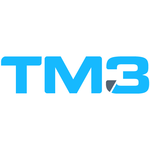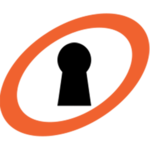Description

Compulink

TM3
Comprehensive Overview: Compulink vs TM3
Compulink and TM3 appear to be referencing software solutions in the healthcare and therapy management sectors, but it's essential to clarify them as distinct, as they don't belong to a unified suite or product line. I will detail each separately below:
Compulink
a) Primary Functions and Target Markets
Compulink is an established provider of electronic health record (EHR) software and practice management solutions. Key functionalities often include:
- Scheduling and appointment management
- Billing and revenue cycle management
- Patient record management
- Telehealth capabilities
- Integrations with diagnostic devices
- Specialty-specific workflows
Target Markets: Compulink primarily targets healthcare providers, including optometry, ophthalmology, dermatology, orthopedics, and therapy practices like physical and occupational therapy. It aims to serve small practices to larger medical institutions.
b) Market Share and User Base
Compulink is a well-regarded player in the specialty EHR market but competes with major EHR providers like Epic, Cerner, and Allscripts in different aspects. Its user base is niche and primarily encompasses practices within the specialties it targets. Market share specifics often depend on regional factors and specialty concentration.
c) Key Differentiating Factors
- Specialty Focus: Tailors its solutions to the unique needs of various medical specialties.
- Customization: Offers customizable templates and workflows specific to practice needs.
- Longevity and Experience: Established in the 1980s, bringing extensive industry expertise.
TM3
a) Primary Functions and Target Markets
TM3 is a practice management software, often used within the therapy and wellness sectors, including physiotherapy and allied health professions. Its functionality typically includes:
- Appointment booking and calendar management
- Patient record keeping
- Billing and invoicing
- Reporting and analytics
- Integration with other healthcare systems
Target Markets: TM3 targets physiotherapy practices, multipractice clinics, and other health and wellness facilities.
b) Market Share and User Base
TM3, while serving a specific segment, competes with various therapy management solutions like Cliniko or Jane App. Its market share is often more localized to regions where it is most actively promoted (for instance, the UK).
c) Key Differentiating Factors
- User-friendly Interface: Emphasizes ease of use and accessibility for practitioners.
- Cloud-Based: Offers flexibility for remote access and management.
- Focused Support: Provides specialized support for therapy and wellness practices.
Comparative Analysis
Compulink and TM3 cater to different segments within the broader healthcare market and don't directly compete against each other. Compulink's strength lies in its extensive, specialty-focused offerings for medical practices needing sophisticated EHR features. TM3, however, serves more niche therapy and wellness practices with essential practice management functions. Their differing focus on specialties and therapy influences their market reach and user base significantly.
In summary, both solutions differentiate themselves through targeted approaches to respective markets, prioritizing features and functionalities that best serve their audience's practice management needs.
Contact Info

Year founded :
1985
Not Available
Not Available
India
http://www.linkedin.com/company/compulink_2

Year founded :
2017
Not Available
Not Available
Canada
Not Available
Feature Similarity Breakdown: Compulink, TM3
Compulink and TM3 are both software solutions that cater primarily to healthcare professionals, offering practice management and electronic health record (EHR) solutions. While they serve similar market needs, there are differences and similarities in their core features, user interfaces, and unique functionalities. Here's a breakdown:
a) Core Features in Common
-
Appointment Scheduling: Both systems offer robust scheduling capabilities, allowing for the management of appointments, including bookings, cancellations, and reminders.
-
Billing and Invoicing: Compulink and TM3 provide comprehensive billing solutions, helping practices manage their financial operations with features like insurance claims processing and payment tracking.
-
Patient Management: They allow for effective patient record keeping, including storing patient demographics, medical history, and treatment plans.
-
Electronic Health Records (EHR): Both solutions support EHR functionalities, enabling the digital documentation, storage, and retrieval of patient health information.
-
Reporting and Analytics: Both platforms offer reporting tools to analyze practice performance, patient outcomes, and financial health.
-
Security and Compliance: They adhere to healthcare industry standards such as HIPAA for data protection and patient privacy.
b) User Interface Comparison
-
Compulink: Compulink is known for its customizable interface, allowing users to tailor the layout and workflow to their specific needs. It emphasizes ease of use with a focus on reducing the clicks needed to complete tasks. The interface may appear less modern compared to newer systems but is function-oriented.
-
TM3: TM3 often boasts a modern, intuitive user interface. It is designed to be user-friendly, with a focus on simplicity and easy navigation. The clean and contemporary design might be more appealing to users who are comfortable with modern software interfaces.
c) Unique Features
-
Compulink:
- All-in-One Solution: Compulink can integrate various subsystems such as optical shop management for optometry practices, which might not be available in TM3.
- Custom Workflow Automation: Offers advanced capabilities for customizing workflow processes, providing automation tailored to specific practice needs.
- Telehealth Features: Compulink has been focusing on incorporating telehealth capabilities, especially in response to increased demand for remote healthcare solutions.
-
TM3:
- Focus on Physiotherapy and Allied Health: TM3 specializes in physical therapy and similar areas, with features catered specifically to these fields.
- Mobile App: TM3 offers a robust mobile app that enables practitioners to manage their services on-the-go, which is a critical feature for many modern healthcare providers.
- Online Booking System: TM3 has a strong emphasis on patient engagement through features like online booking systems directly integrated into practice websites.
Overall, both Compulink and TM3 have distinct strengths and might appeal to different user bases depending on their specific practice needs and preferences in terms of interface and unique functionalities.
Features

User-Friendly Interface
Comprehensive Data Management
Collaborative Tools
Security and Compliance

Reporting and Analytics
Integrations
User Management
Customer Support
Workflow Automation
Best Fit Use Cases: Compulink, TM3
Compulink and TM3 are software solutions designed to meet specific business needs, each catering to different aspects of business operations and management. Here's a breakdown of their best-fit use cases:
Compulink
Compulink offers several software solutions, primarily focused on healthcare, legal, and business management. For the purpose of this discussion, I’ll address the healthcare solution (Compulink Advantage), which is their most well-known product.
a) Best Fit for Businesses or Projects
-
Healthcare Providers: Compulink Advantage is tailored for various healthcare providers, including ophthalmology, optometry, orthopedics, dermatology, and more. It supports electronic health records (EHR), practice management, and patient engagement.
-
Multi-specialty Clinics: Clinics that offer multiple specialties can benefit from Compulink's customizable EHR, which allows different modules or features to be activated based on the specialty's unique needs.
-
Large Practices and Hospitals: Due to its comprehensive suite of features and scalability, larger healthcare practices and hospital systems can efficiently utilize Compulink for integrated practice management and EHR.
d) Industry Verticals or Company Sizes
- Industry Verticals: Primarily healthcare, with a focus on specialty-specific solutions.
- Company Sizes: Medium to large healthcare providers due to its robust feature set, which might be more than smaller practices require.
TM3
TM3 is primarily a practice management software often used by physical therapy and other therapy disciplines. It offers solutions like patient scheduling, billing, and clinical documentation.
b) Preferred Scenarios
-
Physiotherapy and Rehabilitation Businesses: TM3 caters well to physiotherapy clinics, rehabilitation centers, and similar environments where therapy scheduling, session management, and treatment notes are crucial.
-
Small to Mid-sized Therapy Clinics: Clinics that handle a moderate volume of patient interactions can effectively employ TM3, benefiting from its ease of use and targeted features for therapy practice needs.
-
Businesses Needing Remote Access and Telehealth: With the rising demand for telehealth options, TM3 provides functionalities that allow therapists to interact with patients remotely and manage appointments across platforms.
d) Industry Verticals or Company Sizes
- Industry Verticals: Focuses on therapy-related domains like physiotherapy, chiropractic, and sports therapy.
- Company Sizes: Best suited for small to mid-sized clinics due to its ease of deployment and cost-effectiveness, making it accessible for those who may not require the expansive capabilities of larger systems.
Conclusion
Both Compulink and TM3 serve distinct markets within the healthcare industry and cater to different company sizes and needs. Compulink is more versatile for larger practices and specialties, while TM3 is well-suited for therapy disciplines and smaller clinics requiring straightforward, effective practice management tools. Understanding the specific needs of a business or project will guide the choice between these solutions.
Pricing

Pricing Not Available

Pricing Not Available
Metrics History
Metrics History
Comparing teamSize across companies
Conclusion & Final Verdict: Compulink vs TM3
When evaluating Compulink and TM3, it's important to consider various factors such as features, usability, pricing, customer support, and overall value to determine the best product for a specific context, such as a medical practice looking for practice management software.
a) Best Overall Value
Product Offering Best Overall Value:
While both Compulink and TM3 offer robust solutions, the best overall value would depend on the specific needs and priorities of the user. Compulink may offer the best value for practices seeking a highly integrated and comprehensive solution, particularly those in ophthalmology or other specialties where Compulink's focused features shine. On the other hand, TM3 might be better suited for practices looking for more straightforward, user-friendly software with strong support and lower cost.
b) Pros and Cons of Each Product
Compulink Pros:
- Specialty-Specific Features: Compulink is tailored for specialties like ophthalmology, dermatology, and others, offering features that cater to the specific workflows and needs.
- Comprehensive EHR and Practice Management Integration: Offers an all-in-one solution that can handle everything from electronic health records to practice management.
- Customizability: High level of customization to meet the unique needs of varied medical practices.
Compulink Cons:
- Learning Curve: The comprehensive nature might result in a steeper learning curve for new users.
- Cost: It might have a higher price point compared to more straightforward solutions.
- Complexity: Could potentially be too complex for smaller practices that do not require extensive features.
TM3 Pros:
- User-Friendly: Known for being easy to use with a well-designed interface that simplifies practice management.
- Affordability: Typically offers a more budget-friendly option with competitive pricing, making it accessible for smaller practices.
- Excellent Support: High marks for customer service and support, making the implementation and problem-solving processes smoother.
TM3 Cons:
- Limited Customization: May not offer the same level of customization or specialty-specific features as Compulink.
- Feature Limitations: Might lack certain advanced features required by specialized practices needing in-depth functionalities in their practice software.
c) Specific Recommendations
-
For Specialized Practices: If you are a practice in a highly specialized area like ophthalmology, and need EHR software that integrates deeply with clinical workflows, Compulink is likely the better choice due to its specialty-specific features and integrations.
-
For General Practices or Small Clinics: TM3 could be a more suitable option for general practices or smaller clinics due to its ease of use, affordability, and excellent customer support.
-
Budget Considerations: Consider the total cost of ownership, including implementation, ongoing support, and potential for scalability. TM3 might provide a better value if budget is a primary concern and specialty-specific functionalities are not needed.
In conclusion, the best choice between Compulink and TM3 will depend on the specific needs and circumstances of the practice. For those who require specialized features and comprehensive integration, Compulink stands out. For practices prioritizing simplicity and cost, TM3 may be the better fit. It's crucial to conduct a detailed needs assessment and possibly trial both products to see which aligns best with your workflow and business objectives.
Add to compare
Add similar companies




